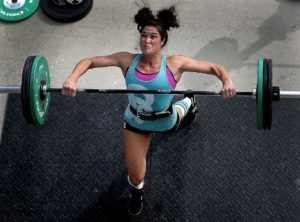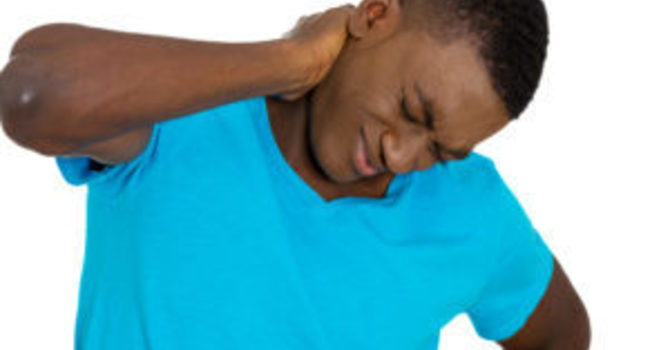
The spines of athletes are under particular stresses not commonly seen in day to day life, such as:
-Higher spine forces due to the physicality of their sport
-Sports-specific postures and positions not commonly performed in day to day life
-Sports-specific repetitive loading, leading to fatigue and overuse
-Longer cycles of activity, more frequency of activity, and more intensity of activity than non-athletes
-High forces produced with the upper body and lower body movements which are transmitted by the lower back and pelvis
For the reasons above, the cause of lower back pain in athletes is not the same as the cause of lower back pain in non-athletes. Special consideration must be paid to the types of forces encountered in the athlete’s sport, and in their training.
The protective benefit of physical activity for the lower back is best represented as a continuum. On one end, inactivity and sedentary lifestyles subject a person to lower back pain due to atrophy and deconditioning, while on the other end of the spectrum, higher levels of activity can subject the athlete to fatigue and overuse, followed by injury and pain. Somewhere in the middle, is the most protective benefit.
Competitive sports and elite-level athleticism can’t always take a middle-of-the-road approach. The use of periodization, individualized training, properly screening out biomechanical inefficiencies, and including therapeutic exercises to help the athlete balance the lower back and pelvis to better transmit and handle force, can help athletes prevent injury. Improperly graded training programs increasing duration, frequency, and intensity too quickly, continue to be one of the major causes of athlete related injuries.
Currently, there is no supporting evidence to show that athletes necessarily have more resilient backs than non-athletes. Yet, there is plenty of evidence to show that they transmit more force through their spines than non-athletes, while playing sports. Many athletes fail physical assessments designed to shed light on biomechanical inefficiencies, despite being great at their sport. Sport alone, as well as training that does not consider the types of spinal stresses the athlete encounters, will not resolve inefficiencies. The following inefficiencies are related to higher risk of developing lower back pain in athletes:
- Postural distortions in the lower back and pelvis, such as over arching of the lower back or loss of the lower back curvature (hyper and hypo lordosis, respectively)
- Hip and lower back muscle imbalances:
- Significant asymmetry between the right and left spine and hip muscles – Renkawitz et. al, found that if there was a greater than 30% difference between the fatigability of the right and left hip and lower back muscles, the individual was more likely to experience lower back pain in sport.
- Poor ratio of the flexors (muscles in the front) and extensors (muscles in the back) of the back and hip – If the athlete becomes flexor dominant or extensor dominant, they are more likely to experience lower back pain (Trainor 2004)
- Decreased range of motion of the lower back and hips
There are a variety of lower back conditions which can affect the athlete. Fortunately for the athlete, the most common type of back pain is soft-tissue related. These are primarily sprains and strains of the muscles, tendons, and ligaments which surround the lower back. These types of injuries tend to be self-limiting, and respond well to conservative treatments like the ones performed here in the office.
Examples of injury mechanisms in different sports are as follows:
- Hyperextension of the lower back
- By putting our hands at our waist and then leaning back as if to look up to the sky, we begin to extend our lower backs. Hyperextension is common in gymnastics, diving, and with lineman in football.
- Repetitive rotational forces
- Repetitive rotation of the lower back is seen in many club and racquet sports such as golf and tennis.
- Compressive forces
- Weightlifters encounter a higher amount of compressive forces on the spine, which can lead to back pain.
In summary, athletes encounter greater spine forces than non-athletes. Therefore, special consideration should be taken in their treatment and in their training. Treatment plans need to address muscular imbalances, improve range of motion, and stabilize the spine and hips. These plans can help return the athlete to their sport after lower back pain, and also be be utilized as a form of lower back injury prevention.
Works Cited
Hides, J. A., et al. “Evidence of Lumbar Multifidus Muscle Wasting Ipsilateral to Symptoms in Patients with Acute/Subacute Low Back Pain.” Spine, vol. 19, no. Supplement, 1994, pp. 165-172.
Kankaanpää, Markku, et al. “Back and hip extensor fatigability in chronic low back pain patients and controls.” Archives of Physical Medicine and Rehabilitation, vol. 79, no. 4, 1998, pp. 412-417.
Leinonen, Ville, et al. “Back and hip extensor activities during trunk flexion/extension: Effects of low back pain and rehabilitation.” Archives of Physical Medicine and Rehabilitation, vol. 81, no. 1, 2000, pp. 32-37.
NADLER, SCOTT F., et al. “Hip muscle imbalance and low back pain in athletes: influence of core strengthening.” Medicine & Science in Sports & Exercise, vol. 34, no. 1, 2002, pp. 9-16.
Nadler, Scott F., et al. “Relationship Between Hip Muscle Imbalance and Occurrence of Low Back Pain in Collegiate Athletes.” American Journal of Physical Medicine & Rehabilitation, vol. 80, no. 8, 2001, pp. 572-577.
Renkawitz, Tobias, et al. “The association of low back pain, neuromuscular imbalance, and trunk extension strength in athletes.” The Spine Journal, vol. 6, no. 6, 2006, pp. 673-683.
Trainor, Timothy J., and Michael A. Trainor. “Etiology of Low Back Pain in Athletes.” Current Sports Medicine Reports, vol. 3, no. 1, 2004, pp. 41-46.
©CenterForMusculoskeletalFunction2018







